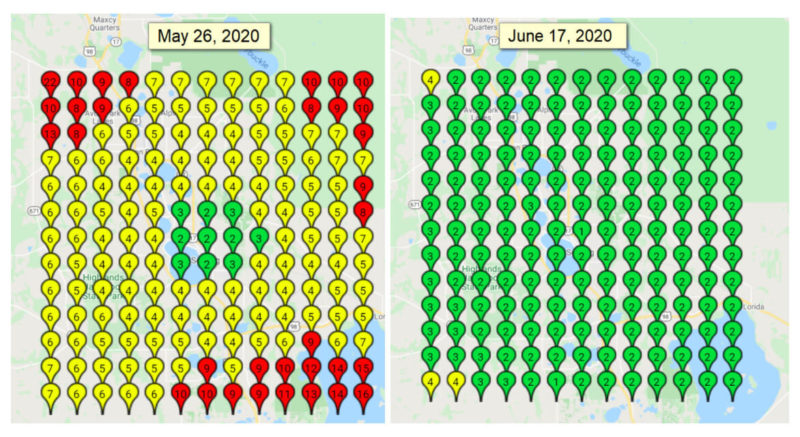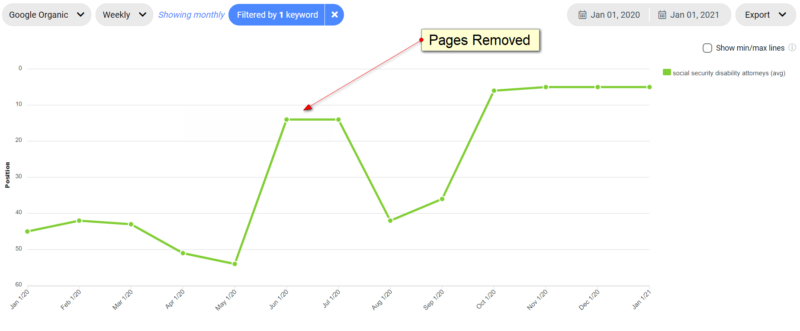Case study: More content is not always better for ranking in Google
Content is king in SEO, but it's critical that it's the right type of content for your target audience and the SERP landscape for each client.
It’s common to hear “content is king” in the SEO industry. Although I agree with that statement, it should not be applied cart blanche for every single site in every single situation. In fact, there are cases in which adding too much low-value content can have the opposite effect for SMBs and local businesses.
The situation. Last year, Sterling Sky worked with a personal injury lawyer client in Florida that wasn’t ranking very well for some of the main keywords that they were targeting. Prior to working with us, the law firm had another company set up dozens of boilerplate service area pages targeting social security disability terms. Each page was focused on an individual city or service area but provided no real value to the users who visited those pages.
The issue. The pages had the following characteristics:
- Very similar content. The location served as the main difference in most of the service area pages. This is a common tactic for businesses that target multiple areas in hopes of driving traffic for searchers looking specifically for “keyword + location.”
- Created with the intent to rank in those cities. Because the content was built with the sole intention to show up in search results, it didn’t serve the needs of the searchers.
- No links. The individual service area pages had almost no incoming links (or internal links), so there was hardly any way for search engines or searchers to find them.
- No traffic. Due to the factors above, the services area pages were not helping the local business site in any way, and, in fact, could have been contributing to cruft.
The solution. Because the pages weren’t adding value to the site, mainly due to points three and four listed above, we made the decision to delete them all and redirect them to the main pages on the site that were about social security disability.
The result. Within weeks of doing this, my colleague Carrie Hill saw big increases in their local pack rankings for “social security disability attorney.” Here is the change using the ranking tool Places Scout:

We also saw gains on the web search organic side for these keywords. This is a screenshot of the ranking tool Whitespark:

Service area pages can work really well in some industries and markets. However, it’s essential to measure the impact of the content you’re adding to your site before implementing a strategy like the one this law firm had.
Why we care. When you put effort behind any SEO strategy, it’s important to have a testing strategy that iterates and works to produce the desired results. It’s critical in every situation to analyze each client, their market, and the SERP landscape individually to determine if they need more content on their site, and, if so, what the best type of content is for the target audience they’re working to serve.
Instead of writing and posting a bunch of content without a plan or a strategy to back it up, make sure you have a plan to build links to the content — this includes internal links — and see if existing pages you have created are actually gaining traffic.
In the case study example, it would have been better to add a few service area pages and determine if they perform well instead of adding 50 of these service area pages as a first step.
Contributing authors are invited to create content for Search Engine Land and are chosen for their expertise and contribution to the search community. Our contributors work under the oversight of the editorial staff and contributions are checked for quality and relevance to our readers. Search Engine Land is owned by Semrush. Contributor was not asked to make any direct or indirect mentions of Semrush. The opinions they express are their own.


